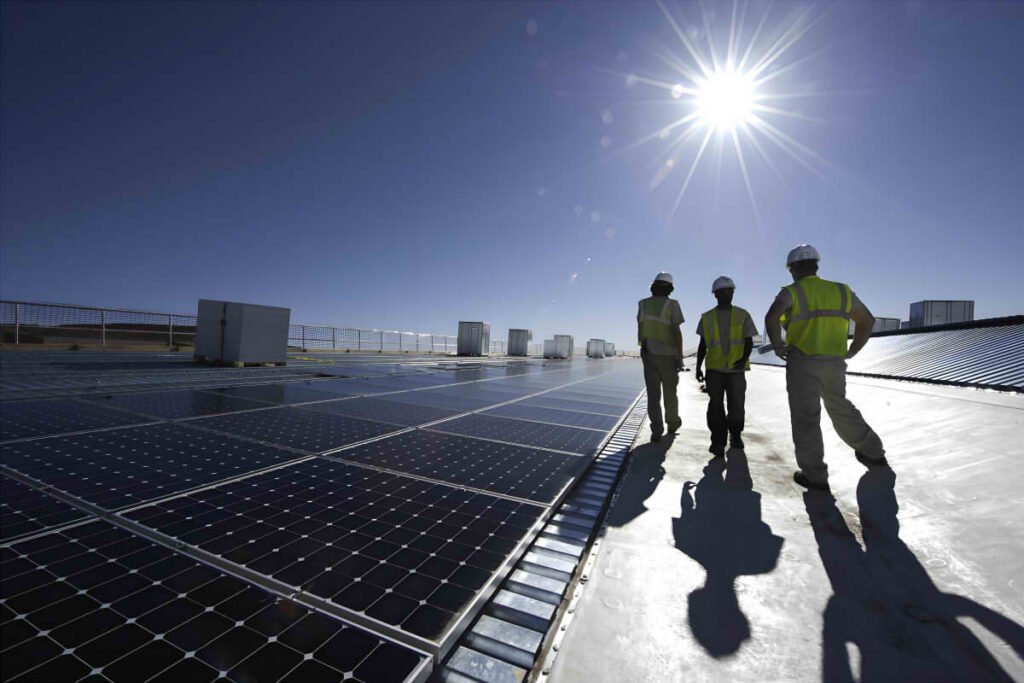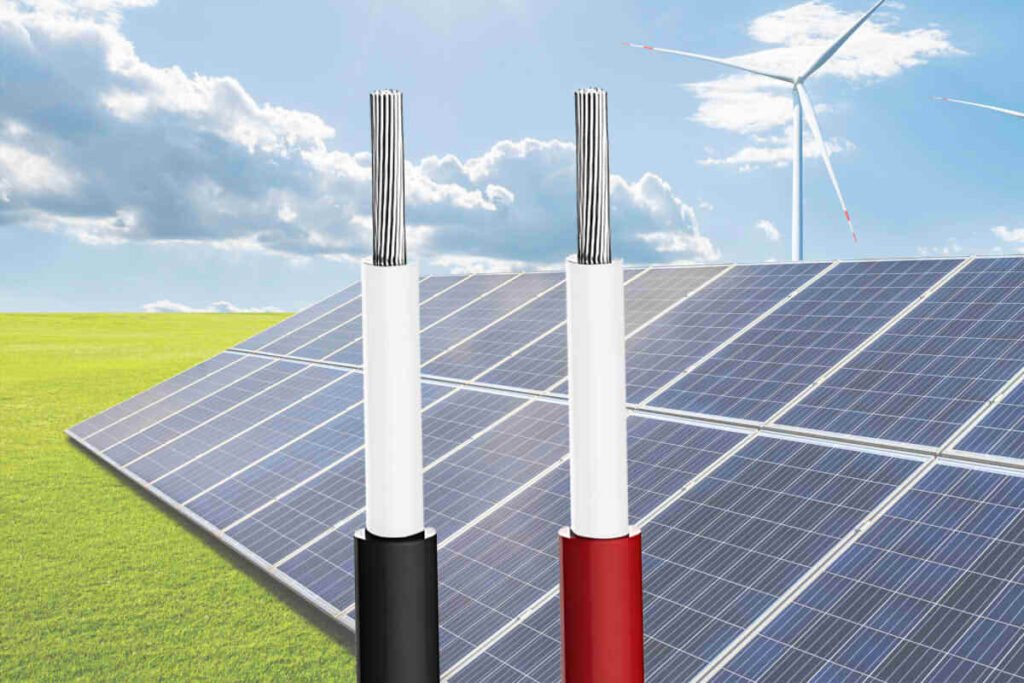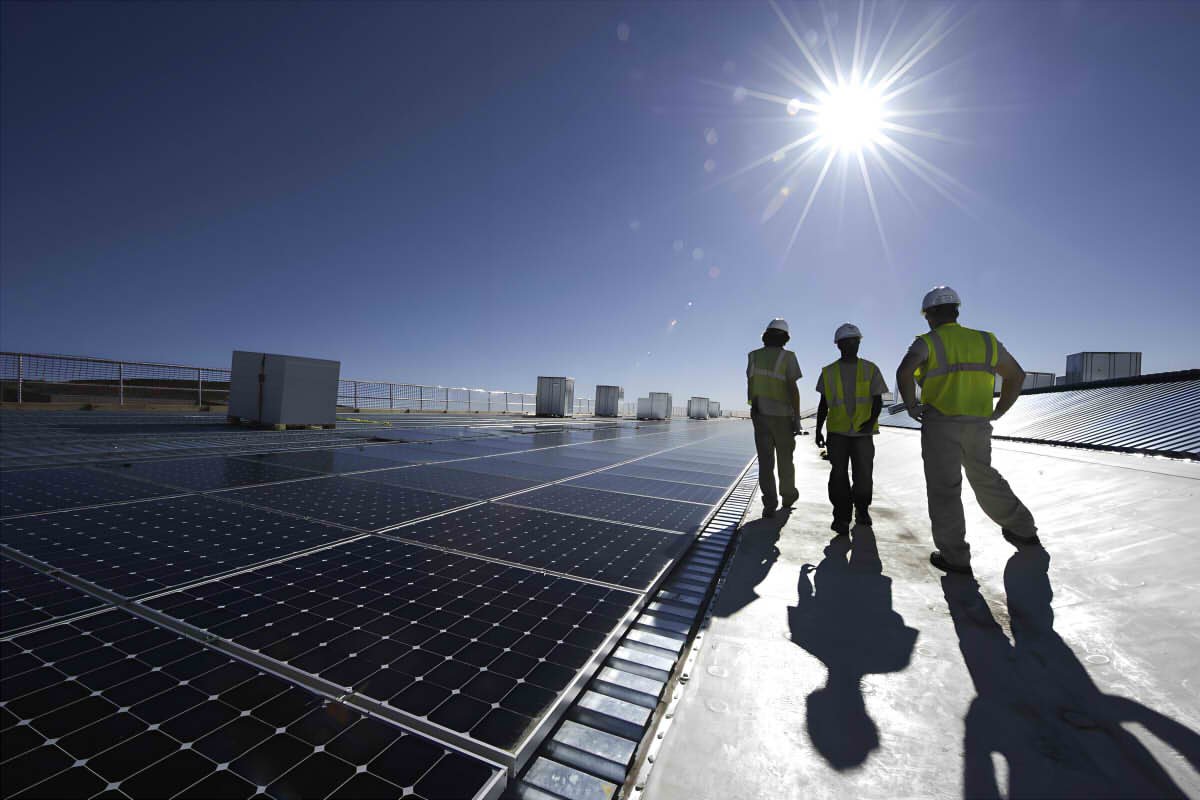Na recentemente concluída 3ª Conferência da Cadeia de Fornecimento Verde Fotovoltaica da China, S&Analista Chefe da P Global, Hu Dan, previu que a capacidade instalada fotovoltaica global deverá atingir 520 GW em 2024, com remessas globais de módulos fotovoltaicos superiores a 600 GW.

O analista afirmou que a capacidade instalada do mercado fotovoltaico global deverá ser de 520 GW em 2024, com a China contribuindo com a maior parte, possivelmente atingindo 240 GW. O mercado fotovoltaico do Sudeste Asiático está experimentando um crescimento estável. A capacidade anual conectada à rede da Austrália é de cerca de 5 GW, O do Japão está entre 4-5GW, e o da Coreia do Sul excede 3GW. O ritmo das centrais fotovoltaicas terrestres de grande escala no Médio Oriente está a acelerar, com instalações crescentes em mercados como a Arábia Saudita, e espera-se que o mercado do Médio Oriente atinja 16 GW em 2024. Os EUA. está projetado para ter uma capacidade fotovoltaica instalada de quase 50 GW em 2024, enquanto o mercado fotovoltaico da Europa se aproximará dos 100 GW, com uma alta proporção de demanda distribuída. Atualmente, O mercado fotovoltaico de África está concentrado principalmente na África do Sul, com um espaço de mercado superior a 10 GW, e uma demanda anual de armazenamento de energia de quase 3GWh. Espera-se que mais de 1,5 GWh sejam conectados à rede na segunda metade de 2024.
De 2024 para 2026, a construção de capacidade fotovoltaica em regiões como a Europa, os Estados Unidos, e a Índia impulsionarão uma enorme demanda por equipamentos, com o tamanho total do mercado esperado atingir 30.4 trilhão de yuans. A demanda por wafer de silício, célula, e o equipamento do módulo deverá atingir 6.9 bilhão, 11.3 bilhão, e 4.2 trilhão de yuans, respectivamente.
Geração de energia fotovoltaica na China
Na primeira metade de 2024, China adicionou 102,48 GW de novas energias fotovoltaicas (PV) capacidade, marcando um 31% aumento ano a ano. Disto, 49.6GW era proveniente de instalações fotovoltaicas centralizadas, e 52,88 GW de instalações fotovoltaicas distribuídas.
No final de junho 2024, a capacidade total fotovoltaica conectada à rede na China atingiu 712,93 GW, incluindo 403,42 GW de usinas fotovoltaicas centralizadas e 309,51 GW de sistemas fotovoltaicos distribuídos, que inclui 131,84 GW de energia fotovoltaica residencial.
A indústria fotovoltaica da China é caracterizada por um alto grau de integridade da cadeia industrial, efeitos de escala significativos, e capacidades tecnológicas líderes. A capacidade total de instalação fotovoltaica para o ano deverá exceder 240 GW. Adicionalmente, a proporção da geração de energia fotovoltaica na geração total de energia também está aumentando, com um aumento esperado para 9% para o ano inteiro.
Geração de energia fotovoltaica nos Estados Unidos
De acordo com o último relatório dos EUA. Administração de informações de energia (AIA), na primeira metade de 2024, energia fotovoltaica contabilizada 59% de toda geração de energia recém-adicionada, tornando-o o principal motor do crescimento da eletricidade nos Estados Unidos.
A nova capacidade instalada total para todas as tecnologias terrestres de grande escala no primeiro semestre do ano foi de 20,2 GW, um aumento de 3,6 GW em comparação com o mesmo período do ano passado. A EIA espera que a nova capacidade instalada no segundo semestre de 2024 alcançará 42,6 GW, com energia fotovoltaica em grande escala montada no solo contribuindo com 25 GW.
No final de 2024, espera-se que a capacidade instalada fotovoltaica recém-adicionada atinja 37 GW, estabelecendo um novo recorde de capacidade instalada em um único ano e dobrando os 18,8 GW alcançados em 2023. A estimativa da EIA é apenas 1GW diferente das previsões feitas no início deste ano pela Solar Energy Industries Association (ATÉ) e Wood Mackenzie. No entanto, a previsão deste último considera todos os segmentos do mercado solar, incluindo residencial, comunidade solar, e setores comerciais e industriais, em vez de focar apenas em projetos terrestres de grande escala.
A maior variável para os EUA. Indústria fotovoltaica está mudando nas políticas de importação. A partir de junho 6, altas tarifas anti-evasão serão impostas sobre módulos e células importados para os EUA. de quatro países do Sudeste Asiático. Espera-se que esta política tenha um impacto significativo nas futuras instalações nos EUA.

Geração de energia fotovoltaica na Europa
A partir do final de 2023, A Europa tinha uma capacidade fotovoltaica instalada cumulativa de 263 GW, aproximando-se do 2025 destino de instalação. Olhando apenas para o 2024 situação de instalação, por um lado, a redução nos custos de energia tradicionais pode diminuir o entusiasmo pela instalação, enquanto por outro lado, algumas regiões estão a registar progressos lentos nas aprovações de centrais eléctricas, levando a uma desaceleração no crescimento geral das instalações.
Em 2024, Espera-se que a Alemanha responda por 19% da procura de módulos fotovoltaicos na Europa, ocupando o primeiro lugar entre os mercados de países individuais. Polônia, Itália, Holanda, e Espanha seguem em posições 2 para 5, com cada contabilização 7-8%, inventando coletivamente sobre 50% da procura total do mercado europeu.
Embora o mercado europeu este ano seja influenciado por factores como a descida dos preços da energia tradicional, queda de preços na cadeia de suprimentos, considerações sobre custos de financiamento, e reduções de subsídios, limitando o crescimento na demanda de módulos, espera-se que a demanda de longo prazo cresça. Isto deve-se às contínuas políticas favoráveis da UE para o desenvolvimento das energias renováveis e ao consenso colectivo entre os Estados-Membros para alcançar o objectivo. 2030 metas de carbono líquido zero. A demanda por módulos fotovoltaicos no mercado europeu deverá ficar entre 95,1 GW e 111,3 GW em 2025, refletindo um 9-18% crescimento em relação a este ano.
Desafios enfrentados pela indústria fotovoltaica
É importante notar que apesar do rápido desenvolvimento da energia fotovoltaica (PV) indústria, também enfrenta desafios significativos. As dramáticas flutuações nos preços das matérias-primas pressionaram muitas empresas, com os preços do polissilício e do wafer de silício caindo mais de 40%, e os preços das células e módulos caindo mais 15% no primeiro semestre do ano. Adicionalmente, a indústria fotovoltaica está sujeita a requisitos rigorosos de ESG (Ambiental, Social, e Governança) desenvolvimento.
Geral, o primeiro semestre deste ano assistiu a um aumento contínuo dos riscos de conflitos geopolíticos globais, acelerar a reestruturação profunda das cadeias industriais e de abastecimento. Muitas das principais economias globais continuam sob políticas monetárias restritivas, incertezas crescentes no crescimento económico. Embora as estruturas energéticas de vários países estejam a transitar rapidamente para modelos verdes e de baixo carbono, as instalações globais de terminais fotovoltaicos continuam a aumentar, embora em um ritmo mais lento.
Diante desses desafios, Empresas fotovoltaicas precisa responder proativamente, melhorando continuamente a sua competitividade através da inovação tecnológica, atualizações industriais, e divulgação de informações ESG.
Análise do mercado de cabos solares

O segmento downstream da cadeia da indústria fotovoltaica inclui geração de energia e aplicações, como sistemas de energia fotovoltaica, transmissão de rede, Produtos de aplicação fotovoltaica, e energia fotovoltaica integrada em edifícios (BIPV). Como componentes elétricos essenciais nesta cadeia industrial, a procura por cabos fotovoltaicos deverá registar um crescimento significativo em linha com o desenvolvimento da indústria fotovoltaica.
De acordo com a Associação de Energia Renovável, uma usina fotovoltaica de 1 MW normalmente requer cerca de 12 quilômetros de Corrente contínua fotovoltaica (CC) cabos. Consequentemente, espera-se que a demanda global por cabos em usinas fotovoltaicas seja 5.76 milhão, 6.6 milhão, e 7.26 milhões de quilômetros em 2024, 2025, e 2026, respectivamente, com taxas de crescimento homólogas de 26%, 15%, e 10%.
Os analistas da ZMS acreditam que o rápido crescimento do novo mercado de armazenamento de energia impulsionará um aumento substancial na procura de cabos. Como fabricante especializado de cabos, A ZMS planeia expandir as suas linhas de produção de cabos especiais para melhor satisfazer a crescente procura de vários novos cabos específicos para energia.
Para se adaptar a esta tendência, A ZMS não só aumentará a eficiência da produção e a qualidade do produto, mas também fortalecerá a pesquisa e o desenvolvimento tecnológico para lançar produtos que melhor atendam às demandas do mercado.. Adicionalmente, a empresa monitorará de perto as mudanças nos padrões internacionais e as tendências em inovação tecnológica para garantir que o cabos para sistema solar que produz atende às crescentes necessidades da indústria, particularmente em termos de resistência às intempéries, desempenho de fogo, e eficiência de transmissão, mantendo assim uma posição de liderança no mercado altamente competitivo.

